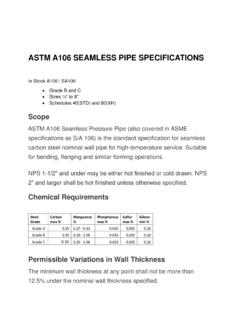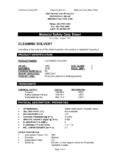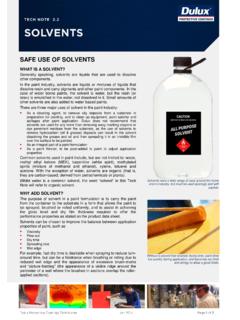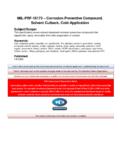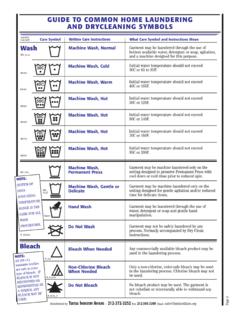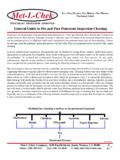Transcription of OXYGEN CLEANING CGA - Kessler Sales & …
1 OXYGEN CLEANING CGA 1. Reference: Compressed Gas Association, Inc. CGA 2004 CLEANING Equipment for OXYGEN Service Fifth Edition. 2. OXYGEN CLEANING Procedure: The parts shall be inspected for foreign particles and cleaned accordingly. Harmful contaminates include both organic and inorganic materials such as oils, greases, paper, fiber, rags, wood, coal dust, solvents, weld slag, rust, sand and dirt. All parts shall be cleaned using the following procedures. Small parts shall be cleaned in an ultra sonic cleaner when possible for 20-30 minutes using hot water, approximately 120 degrees to 140 degrees F, and an approved caustic detergent. Parts shall then be rinsed with hot water 120 degrees to 140 degrees F.
2 Final rinse shall be made with de-ionized water. Larger parts, piping, tubing and large fittings will be pressure washed using hot water 120 degrees to 140 degrees F, and an approved caustic detergent. The parts shall then be pressure rinsed with hot water, 120 degrees to 140 degrees F. Final rinse shall be mad with de-ionized water. Allow parts to air dry in a clean environment or Laminar Flow Station whenever possible. Parts may also be dried using heat or filtered Nitrogen as needed. Solvent CLEANING : Small parts shall be immersed in perchloroethylene (PERC) and allowed to vapor dry. If a scrub or a wipe is used, use only clean, lint free cloth. Piping and tubing may be solvent cleaned by either wet swabbing with a clean, lint free cloth saturated with PERC , followed with a dry swab to check for cleanliness, or pressure washing with PERC and drying with filtered Nitrogen or allowing part to vapor dry.
3 A clean lint free swab may be used for inspection. Large parts may be submerged in PERC or using a saturated clean, lint free cloth, wipe the total surface of the part.
